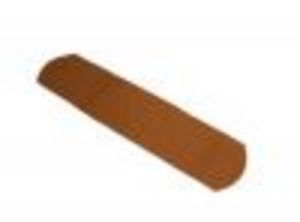Common blisters are basically caused by friction, burns or other injuries to the skin. Blisters happen when the epidermis, which is the outermost layer of the skin, separates from the dermis, the layer underneath. Because of the separation, protective bodily fluids accumulate in between the skin layers. Because infection can set in and cause further problems, it’s important that you care for common blisters as soon as they appear. Try these homemade treatments for common blisters.
Some homemade treatments recommend that a common blister be broken and drained so it will heal faster. Others warn against bursting a blister because of the increased risk of infection. One thing that everyone agrees on is the epidermis should never be removed from the blister. Doing so will significantly increase the risk of infection. Not to mention the fact that removing the skin will produce a raw, open wound. The skin that’s covering the common blister will dry up and flatten down, so it won’t be a problem.
The easiest homemade treatment for common blisters is to simply apply pure Aloe Vera juice to the affected area two to three times a day. Cover the blister with a bandage or a gauze pad and tape to cushion and protect it. The Aloe Vera juice will both disinfect and heal the common blister.
If you do opt to drain a blister, you’ll need a small, sharp needle, rubbing alcohol, a cotton ball and a bandage. If you don’t have any rubbing alcohol on hand, you can use Listerine® Antiseptic Mouthwash.
Wash your hands with antibacterial soap and water first. Then, douse the cotton ball with the alcohol and completely wipe the needle. Gently wipe off the blister, as well as the surrounding area.
Then, pierce the common blister with the sterilized needle. Gently press on it to push the fluids out. Wipe over the blister with more rubbing alcohol and cover it with a bandage or a gauze pad and tape to protect it. Keep the open blister clean and sanitary to help prevent infection from setting in. Change the bandage everyday and apply an antibiotic ointment to help kill germs and bacteria. It will also help heal the common blister.
If, by chance, you notice that the common blister has turned red in color or has pus coming out of it, contact your medical doctor immediately. These are two signs that the blister has become infected.
After the epidermis has dried up and the wound is closed, you can stop bandaging the blister. Unless it needs protection from friction and rubbing, that is.
Another homemade treatment is to choose not to drain the blister and use a moleskin circle to protect it with instead. The circle will need to be large enough so the inside of the circle fits completely around the diameter of the blister. Moleskin can be found at your local pharmacy.
Believe-it-or-not, another homemade treatment for small, common blisters is to first drain it. Then, squeeze a small dab of Super Glue® in between the two layers of skin. Press the epidermis down and allow the glue to dry.




